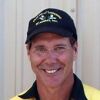What we think or believe — and the value we place on these attitudes — will directly influence you, either positively or negatively, in a deadly-force or high-stress event. These values will even have an effect on your everyday training. Over the course of the next two months — my next four consecutive columns here on Police1 — I will address some areas of concern that I believe inhibit performance in deadly force encounters and other stressful events. I will very likely piss some of you off. That’s okay, because as long as I get you to thinking about this stuff, I’ll have done my job.
As a world-class professional shooter and trainer, I deal with all aspects of performance, but particularly the top end of performance, and constantly strive to push the envelope, both in the real world arena and the competitive arena for myself and my students.
What separates world-class performers from everyone else is what they think, believe, and program into their minds and are able to access under real-world conditions of stress, uncertainty, and the unknowns that come along — this, along with an extremely high work ethic and discipline toward all facets of performance in actual events and in training in the critical difference that leads to winning.
There are a lot of sayings and beliefs that get bandied about and are widely regarded as “true” but in reality there is often very little validation or substantive research done to affirm them. There are also widespread beliefs about what being “well trained” actually means, and opinions vary enormously on this one issue.
It is my intent to look at these sayings and belief systems and see where the truth really lies. Let’s get started with one from each category — Hype, Myth, and BS.
Hype: “Slow is smooth and smooth is fast.”
Like all good sayings, there is a grain of truth about this one... to a point. What I find is that people tend to move too slowly trying to be smooth and end up being slow. Then, when confronted with a very life like threat in real time, they end up rushing and making mistakes on the draw (and on other skills).
Reality — You must learn to move at the top end of your speed range without rushing or creating excessive antagonistic muscle tension. This is a trainable range that requires exact training — both physical and mental. Too many times I see students “sneaking up on the gun or target,” trying to be smooth and just being slow along with it.
Thoughts — You’re going to need specific, targeted training on this one to significantly increase your skills. Learning to “climb the mountain of peak performance” and get rid of limiting beliefs, change your mental state, work on kinesthetic awareness and processing as well as develop a whole new range of skills applications is far more complicated than just “go fast and try to be smooth”. The results are worth the price of admission however.
Myth: “If your heart rate goes above 140 BPM, you won’t be able to see your sights.”
This one was a result of some information by Bruce Siddle and others on heart rate as an indicator of stress and its effect on vision.
Reality — The heart rate is only an indirect indicator of stress load and doesn’t come close to showing what is really going on in the brain of the subject that is under the stress load. To test out this theory, I’ve personally wired up with heart rate monitors and undergone all sorts of stress testing. I’ve been able to visually and physically process what is going on with the gun and the sights at heart rates in excess of 184 bpm.
Thoughts — Stop telling people they can’t see their sights when the heart rate goes above 140 BPM. It is not true and you are doing them a disservice.
BS: “If you keep missing your target, you need to slow down.”
Reality — Speed is not the cause of the mistake but rather a distraction.
Thoughts — Attentional focus is the real culprit. First try to identify and fix the problem at the speed you made the mistake. Otherwise, how do you get better in terms of speed and precision?
Looking Ahead
That’s it for now. In coming weeks — every other Monday or thereabouts, so I’m told by Police1 Editor Doug Wyllie — I’ll be addressing all sorts of Hype, Myth, and BS, including stuff like the notions that “speed’s fine but accuracy is final,” and “competition will get you killed.”


